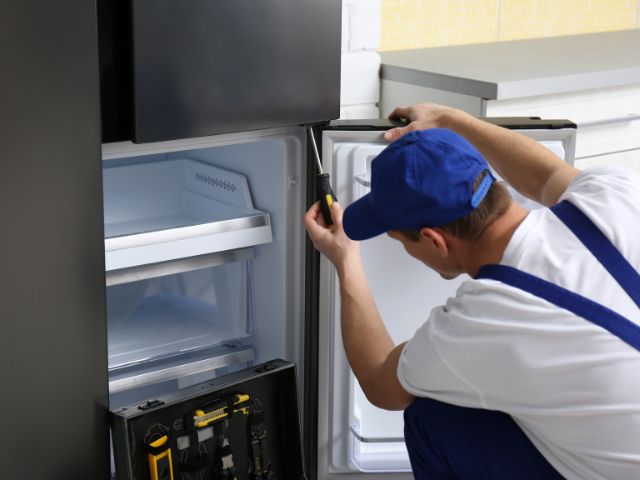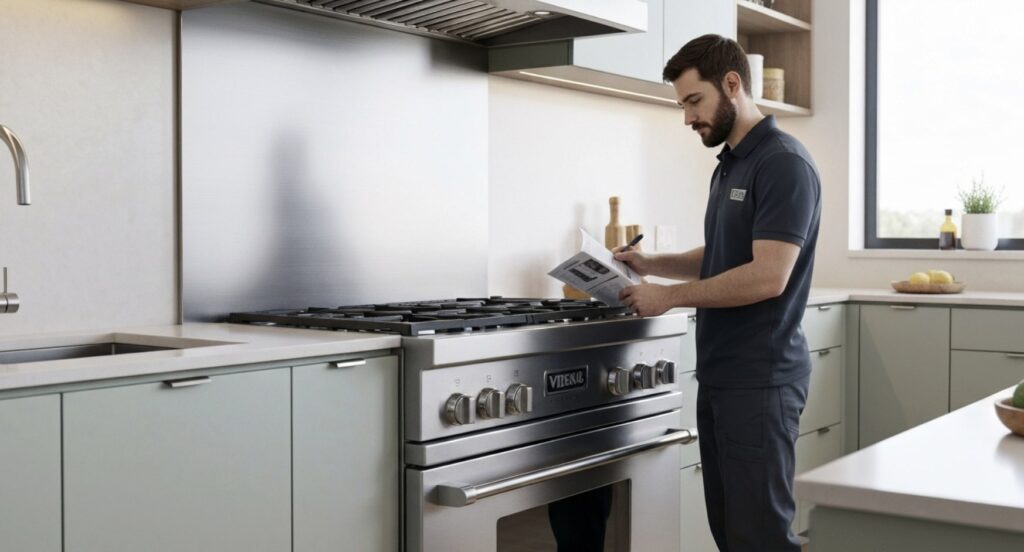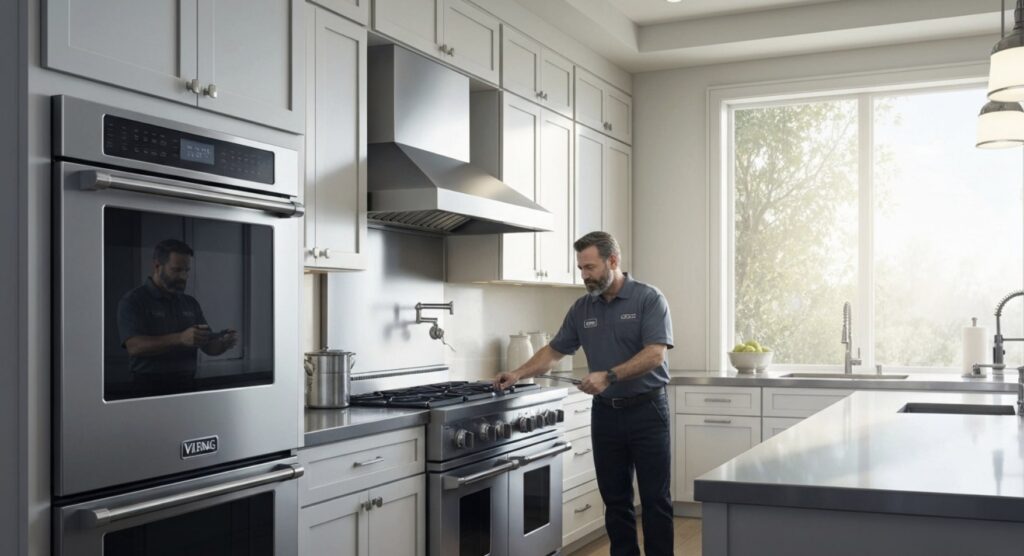If your Viking oven isn’t heating up as it should or takes longer to ignite, it could be a sign that the igniter is failing. Igniters play a crucial role in getting your oven up to the right temperature. Over time, they can wear out, leading to inconsistent performance or even a complete shutdown of your oven’s heating functions. Luckily, replacing an igniter in a Viking oven is a manageable task, even if you’re new to DIY repairs. This guide will walk you through the Viking oven igniter replacement process step-by-step, helping you restore your oven’s efficiency and performance with minimal effort.
Why Your Viking Oven Igniter Needs Replacement
An igniter in a gas oven is responsible for igniting the gas that fuels your oven’s heat. When it fails, it can make your Viking oven unreliable, causing issues like slow preheating or a complete lack of heat. Some of the main reasons for replacing an igniter include:
- Difficulty in Heating Up: If the oven takes too long to preheat, a faulty igniter may be to blame.
- No Ignition or Flame: When the igniter can’t create a spark, the oven won’t ignite, making it useless for baking or roasting.
- Unusual Clicking or Buzzing: A weak or failing igniter might produce odd noises, signaling it’s time for a replacement.
Tools & Parts You’ll Need for the Replacement
Before you begin, gather these essential tools and parts for a smooth process:
- Replacement igniter (specific to your Viking model)
- Phillips and flathead screwdrivers
- Nut driver or wrench
- Safety gloves
- Multi-meter (to check continuity)
Ensuring you have the correct Viking oven igniter replacement part is crucial, as not all igniters are interchangeable.
Step-by-Step Guide to Viking Oven Igniter Replacement
Step 1: Turn Off Power and Gas Supply
- Safety is your first priority. Start by disconnecting your oven from the power source to avoid electrical shocks. If your oven is hard-wired, turn off the breaker in your electrical panel. Then, shut off the gas supply to prevent any leaks or potential hazards during the replacement.
Step 2: Remove the Oven Racks and Bottom Panel
- Open the oven door and carefully take out all the oven racks to give yourself clear access to the igniter. You’ll typically find the igniter attached to the bottom panel, so remove this panel by loosening the screws holding it in place.
Step 3: Locate and Remove the Old Igniter
- Once the panel is removed, you should see the igniter near the burner tube. It’s usually secured with two screws and connected with wires. Use a screwdriver or nut driver to detach the screws and gently disconnect the wires from the igniter. Remember, some Viking models may have different igniter placements, so consult your oven manual for specific details if needed.
Step 4: Test the Old Igniter (Optional)
- If you’re uncertain whether the igniter is the problem, you can test it with a multi-meter. Set the multi-meter to measure resistance and touch the probes to the igniter’s terminals. A reading of zero or no continuity indicates a faulty igniter, confirming it’s time for a Viking oven igniter replacement.
Step 5: Install the New Igniter
- Unbox your new igniter carefully (igniters are fragile) and attach it to the wires. Make sure the connections are secure to avoid future issues. Position the new igniter where the old one was placed and screw it firmly into the bracket. The new igniter should fit snugly and sit at the same angle as the old one to ensure proper ignition.
Step 6: Reassemble the Oven Components
- Once the new igniter is in place, replace the bottom panel by screwing it back securely. Return the oven racks to their original positions.
Step 7: Restore Power and Gas Supply
- Turn the gas supply back on and plug your oven back into the outlet or switch on the breaker. Turn on the oven to test if the new igniter is working properly. The oven should now preheat faster and ignite without delay, indicating a successful Viking oven igniter replacement.
Tips to Extend Your Viking Oven Igniter’s Lifespan
- Regular Cleaning: A buildup of grease and debris can cause wear on the igniter. Clean the oven regularly to avoid premature failure.
- Avoid Slamming the Door: Vibrations from a heavy door slam can damage the igniter over time.
- Annual Inspection: Have a professional inspect your oven annually, especially if you notice any irregularities.
These habits can help keep your Viking oven igniter working smoothly, reducing the frequency of replacements.
Final Thoughts
Replacing an igniter might seem daunting, but with the right steps, you can perform a Viking oven igniter replacement in less than an hour. This straightforward task can save you time and money by extending the life of your Viking oven and keeping it functioning at its best. If you follow each step carefully, you’ll have your oven back in prime condition in no time.
For homeowners unsure about handling this on their own or who encounter unexpected issues, don’t hesitate to call us at Viking Appliance Repair Pros. Our team of experts is here to help with any Viking oven issues, from igniter replacements to comprehensive repairs. And, for more handy appliance repair tips, be sure to check out our previous blog posts!
FAQs
Q: How long does a Viking oven igniter usually last?
A: On average, an oven igniter can last 3-5 years, depending on usage and maintenance.
Q: Can I use a generic igniter, or does it have to be Viking-specific?
A: Always use the recommended Viking-specific igniter for optimal performance and compatibility with your oven model.
Q: What happens if I install the igniter incorrectly?
A: An incorrect installation can prevent the oven from igniting properly, or worse, cause safety issues. Follow the steps carefully or seek professional assistance.
Q: Why does my igniter click but not light?
A: Clicking sounds indicate the igniter is attempting to spark. If it doesn’t light, the igniter may be faulty or there could be a gas supply issue.
Thank you for reading! For more helpful tips on Viking appliances, check out our previous blog on How to Fix an Oven Making Strange Noises.






